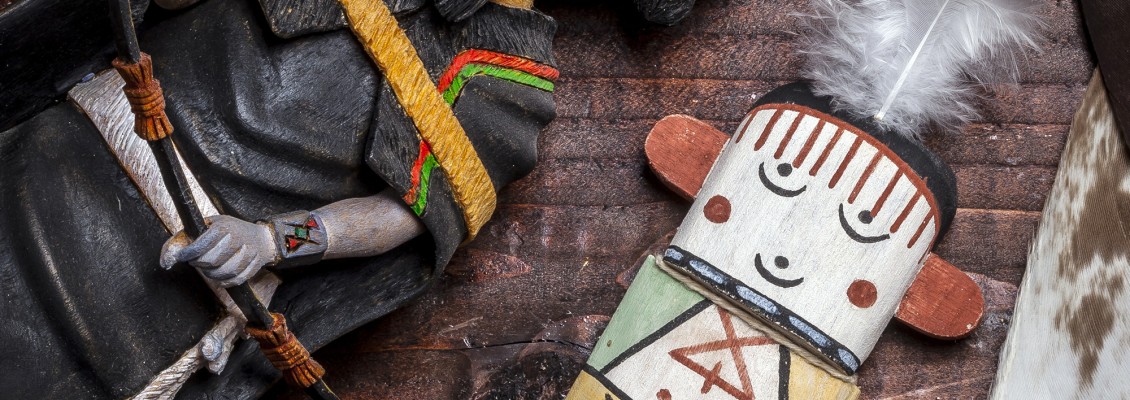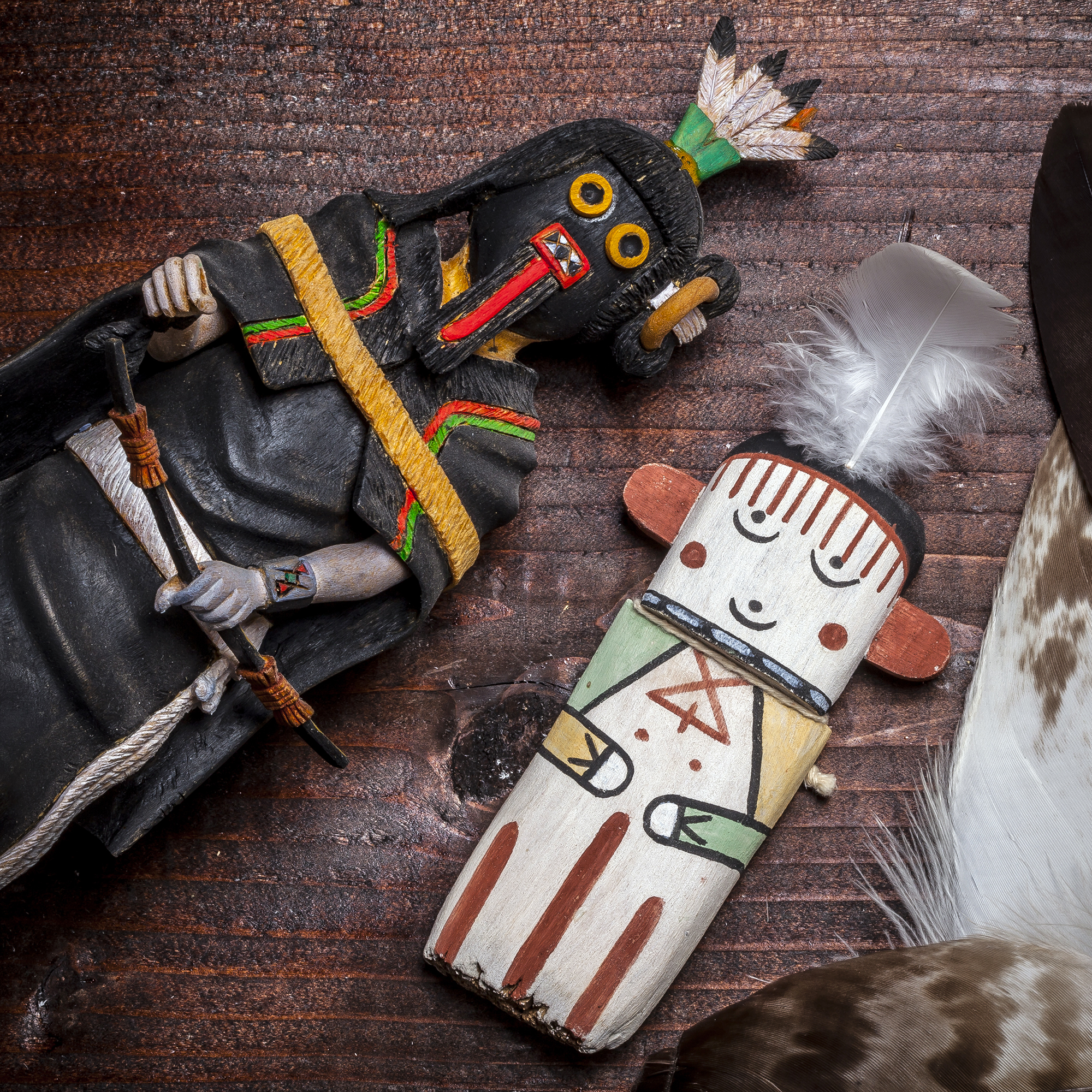

How to Authenticate a Katsina (AKA Kachina)
Katsina is a Hopi word. Katsina (Kah’ sti nah) are spirits that are intertwined with the Hopi people of the Southwest. The Hopi people of Northern Arizona are the only Tribe with katsinum (Kah’ tsi num) (plural).
The Pueblo tribes in New Mexico have beings that are similar to katsinum that visit their villages/pueblos, based on the Tribe and language they are called by other names. Due to history, most of these tribes do not allow outsiders to see their dances nor do they carve images of their beings into dolls. The Zuni tribe is one that will on occasion carve a doll.
Authentic Katsina dolls are carved from cottonwood root. They may be painted with natural pigments or commercial paints. More contemporary dolls are carved from one piece of wood. Sometimes the details are burned in using a wood burner. Older dolls are pieced together with the arms and legs being added using a peg and glue method. They can be as simple as a doll given to a baby - which is a flat doll devoid of much decoration and the arms are painted on at the midpoint of the piece of wood with the bottom portion painted with red rounded vertical lines - to a complex doll carved in a position that indicates a myriad of movement included in the carving. All of these are accepted forms of katsina carving.
Now a days other tribes are starting to carve replica katsina dolls. These are considered offensive to the actual beings. They are typically not dressed appropriately and do not have the essence carved into them that an initiated Hopi man will include by virtue of his lineage.
Although other tribes will try to pass a carving off as a katsina doll it isn’t considered a katsina doll if it is not carved by a Hopi man.
-
Katsina is a Hopi word, all Katsina dolls are Hopi, there are no exceptions.
-
Authentic Katsina dolls are carved from cottonwood root.
-
They may be painted with natural pigments or commercial paints. More contemporary dolls are carved from one piece of cottonwood root.
-
Sometimes the details are burned in using a wood burner.
-
Older dolls are pieced together with the arms and legs being added using a peg and glue method. They can be as simple as a doll given to a baby - which is a flat doll devoid of much decoration and the arms are painted on at the midpoint of the piece of wood with the bottom portion painted with red rounded vertical lines - to a complex doll carved in a position that indicates a myriad of movement included in the carving. All of these are accepted forms of Katsina carving.
-
Other tribes are starting to create carvings they are calling either Katsina dolls or replicas. These are not authentic Katsina dolls. They are typically not dressed appropriately and use paint colors not associated with authentic Katsina dolls.






Leave a Comment